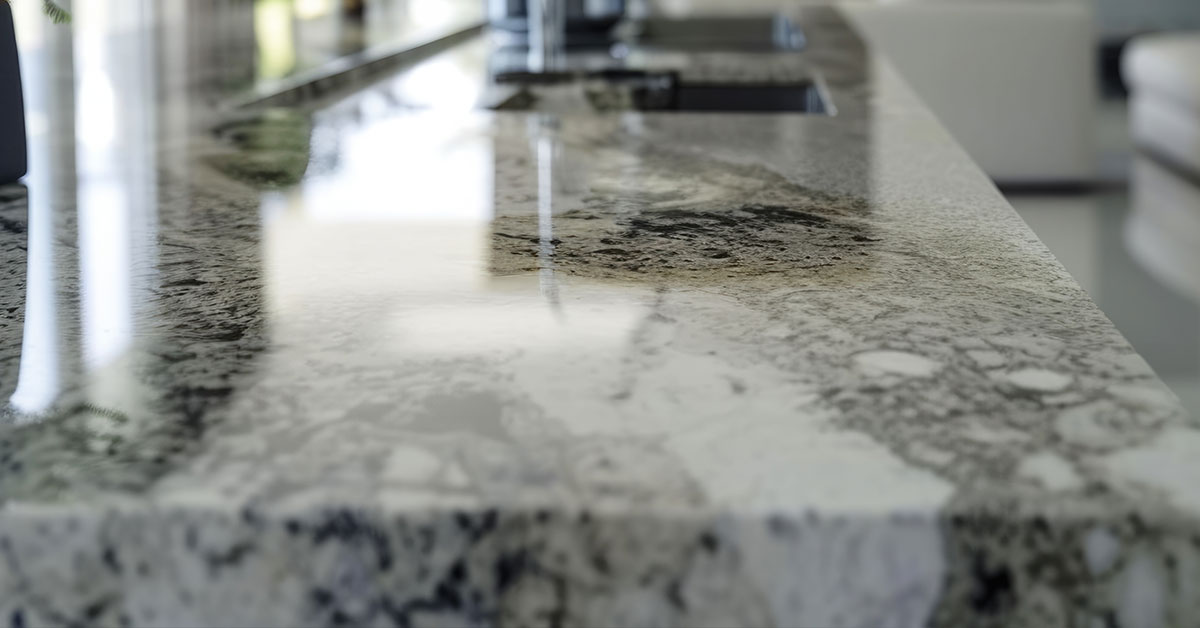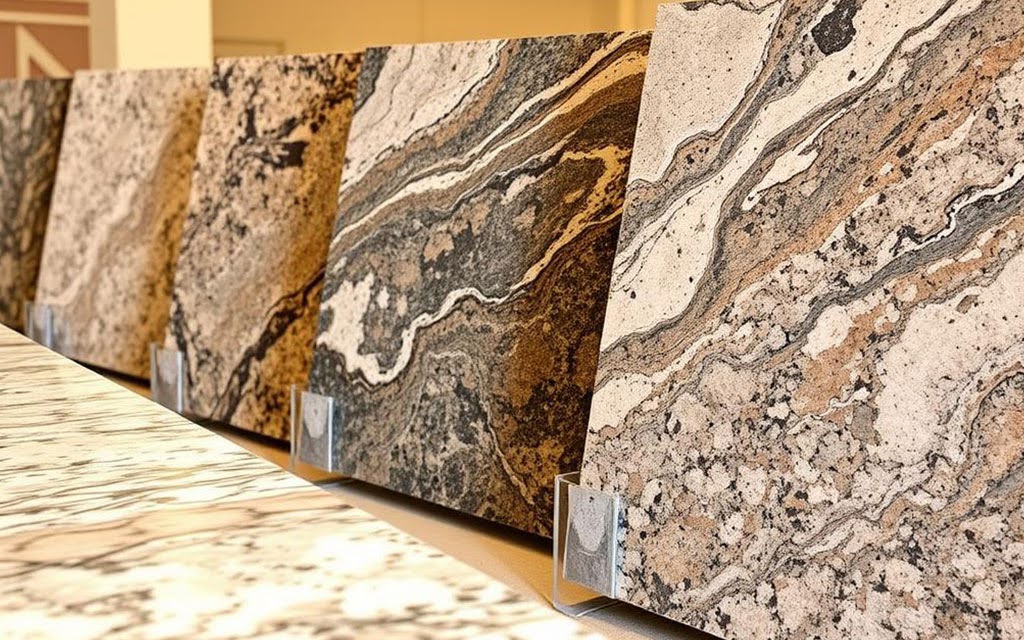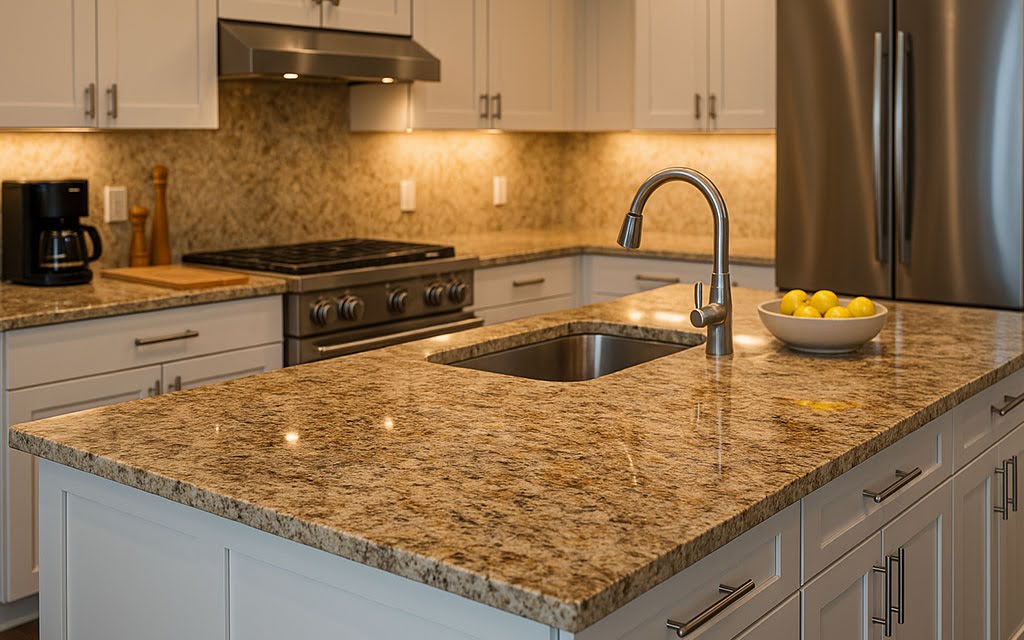Granite Countertops Pros and Cons: 7 Critical Factors

Did you know that granite countertops can boost your home’s value by up to 10%? This stunning natural stone material has become increasingly popular among homeowners who are drawn to its exceptional durability and timeless beauty. However, before making an investment in granite countertops, it’s crucial to thoroughly understand both the advantages and disadvantages that come with this premium countertop material. This comprehensive guide will explore the essential granite countertops pros and cons, examining seven critical factors that will help you determine whether granite is the right choice for your kitchen or bathroom renovation project.
Key Takeaways
- Granite countertops can enhance property value significantly.
- Understanding both advantages and disadvantages is essential before choosing granite.
- Durability and heat resistance are among the top pros of granite countertops.
- Some cons include the risk of chipping and the need for regular sealing.
Customization options provide unique aesthetics for kitchen designs.
Table of Contents
Understanding Granite Countertops
Granite represents one of nature’s most remarkable creations, beloved by homeowners and designers alike for its incredible combination of natural beauty and exceptional strength. This natural stone forms through an fascinating geological process that occurs deep within the Earth over millions of years, resulting in a material that brings both durability and unique character to any space where it’s installed.
What is Granite?
Granite is a natural stone composed primarily of three essential minerals: quartz, feldspar, and mica, which work together to create its distinctive appearance and remarkable durability. This unique mineral composition makes granite an incredibly strong and visually appealing material that has become a popular kitchen countertop material among discerning homeowners. The presence of quartz provides hardness and durability, while feldspar contributes to the stone’s overall structure and color variations, and mica adds those distinctive sparkly flecks that catch and reflect light beautifully. Each slab of granite tells its own geological story through the intricate patterns and color combinations that developed during its formation, making it impossible to find two identical pieces. This inherent uniqueness is one of the primary reasons why granite is an excellent choice for homeowners who want their kitchen countertops to serve as a distinctive focal point that cannot be replicated.
The Formation Process of Granite
The formation of granite begins when magma cools extremely slowly beneath the Earth’s surface, a process that can take thousands to millions of years to complete. This gradual cooling process is crucial because it allows large, well-formed crystals to develop, which ultimately gives granite its characteristic strength, durability, and stunning visual appeal. During this extended formation period, different minerals separate and crystallize at various rates and temperatures, creating the unique patterns, veining, and color variations that make each granite slab absolutely unique. The slower the cooling process, the larger the crystals become, resulting in granite with more pronounced patterns and greater visual interest. This natural formation process explains why granite is naturally resistant to many forms of damage and why it has been prized as a building material for centuries, from ancient monuments to modern kitchen design applications.
Unique Characteristics of Granite Slabs
One of the most important characteristics to understand about granite is that granite is a porous material, which means it requires proper sealing to maintain its appearance and functionality over time. This porosity varies among different types of granite, with some varieties being more porous than others, but all granite requires some level of protection to prevent staining and liquid absorption. The porous nature of granite means that without proper sealing, it can absorb liquids like wine, coffee, oil, and other common kitchen substances, potentially leading to permanent staining or discoloration. However, when properly sealed and maintained, granite countertops provide decades of beautiful, functional service. Each slab is unique in terms of its porosity, pattern, color distribution, and mineral composition, which means that homeowners can select pieces that perfectly complement their specific design vision. This uniqueness extends beyond just appearance – some granite varieties are naturally more resistant to staining and etching than others, making the selection process an important consideration in the overall decision-making process.
Granite Countertops Pros and Cons
When evaluating granite countertops pros and cons, it becomes clear that this natural stone option offers compelling benefits alongside some important considerations that every homeowner should carefully weigh. Understanding both the advantages and disadvantages helps ensure that your investment aligns with your lifestyle, budget, and long-term expectations for your kitchen space.
Advantages of Granite Countertops
The pros of granite countertops are numerous and compelling, starting with their exceptional durability that allows them to withstand the daily rigors of active household use. Granite countertops demonstrate remarkable resistance to scratches, heat damage, and most types of staining when properly sealed, making them particularly well-suited for busy kitchen environments where cooking and food preparation are frequent activities. The natural beauty of granite is truly unmatched among countertop materials, with each slab offering distinctive patterns, colors, and mineral compositions that create a one-of-a-kind centerpiece for any space. This aesthetic appeal extends far beyond mere appearance – granite brings a sense of luxury and sophistication that can significantly enhance the overall ambiance of your kitchen or bathroom. From a financial perspective, granite countertops represent a solid investment that typically increases home value substantially, making properties more attractive to potential buyers and often providing a strong return on investment when it comes time to seal and sell.
Disadvantages of Granite Countertops
While the benefits are substantial, the cons of granite countertops require honest consideration before making this significant investment. The high initial cost represents the most immediate disadvantage, as granite typically costs significantly more per square foot than many alternative countertop materials like laminate or tile. The installation process adds another layer of complexity and expense, as granite requires professional installation due to its substantial weight and the precision required for proper fitting and sealing. Granite is a heavy material that may require additional cabinet reinforcement, potentially adding to the overall project cost. The ongoing maintenance requirements represent another important consideration – granite countertops must be sealed regularly to maintain their stain resistance and appearance, typically requiring resealing every one to two years depending on usage and the specific type of granite selected. Additionally, while granite is highly durable, it can chip or crack under extreme impact, and repairs can be challenging and potentially expensive.
| Advantages | Disadvantages |
| Exceptional durability and longevity | High initial cost compared to other materials |
| Resistant to scratches and heat damage | Complex installation process requiring professionals |
| Unique aesthetic appeal with natural patterns | Regular maintenance and sealing requirements |
| Increases home value significantly | Potential for chipping under extreme impact |
| Wide variety of colors and patterns available | Heavy weight may require cabinet reinforcement |
| Heat resistant for hot pots and pans | Can stain if not properly sealed |
Durability and Maintenance Requirements
The question of durability often tops the list when homeowners are considering granite countertops for their kitchen remodel projects. Granite’s durability stems from its natural formation process and mineral composition, making it one of the most resistant materials available for countertop applications in today’s market.
How Durable is Granite?
Granite is highly durable and demonstrates exceptional resistance to the types of damage that commonly affect other countertop materials in both residential and commercial applications. In a busy kitchen environment, granite can withstand daily use including cutting, chopping, and the placement of hot cookware without sustaining significant damage. The hardness of granite makes it naturally resistant to scratching from knives and kitchen utensils, though using cutting boards is still recommended to maintain the surface’s pristine appearance and protect your knives’ edges. Granite also exhibits remarkable heat resistance, allowing you to place hot pots and pans directly on the countertop without fear of thermal shock or damage, though using trivets and heat pads is advisable for extreme temperatures. With proper care and maintenance, granite countertops have long lifespans that can extend for decades, making them a worthwhile investment in granite countertops for homeowners planning to stay in their homes long-term. The natural strength of granite means that normal household activities pose minimal risk of damage, though extreme impact from dropping heavy objects can potentially cause chipping or cracking.
Sealing and Maintenance Needs
Because granite is a porous material, it requires regular sealing to maintain its stain resistance and preserve its beautiful appearance over time. The frequency of sealing depends on several factors, including the specific type of granite selected, the level of use the countertops receive, and the quality of the initial sealing job. Most granite countertops require resealing every one to two years, though some denser varieties may need less frequent attention while more porous types might require annual sealing. The sealing process itself involves applying a penetrating sealer that fills the microscopic pores in the stone, creating a protective barrier that prevents liquids from being absorbed into the surface. When you’re considering granite countertops, it’s important to factor in this ongoing maintenance requirement as part of the total cost of ownership. Daily cleaning is straightforward and requires only mild soap and water, making routine maintenance simple and cost-effective. However, avoiding harsh chemical cleaners and acidic substances is crucial to preserving the integrity of the seal and preventing damage to the stone surface.
| Maintenance Task | Frequency | Difficulty Level | Estimated Cost |
| Daily cleaning with mild soap and water | Daily | Easy | Minimal |
| Sealing granite surface | 1-2 years | Moderate | $200-400 professional/$50-100 DIY |
| Deep cleaning and polishing | Monthly | Easy to Moderate | $20-50 |
| Professional inspection | 2-3 years | N/A | $100-200 |
| Chip or crack repair | As needed | Professional required | $200-600 |
Aesthetic Appeal and Customization Options
The visual impact of granite countertops extends far beyond their functional benefits, offering homeowners an opportunity to create truly distinctive and personalized spaces that reflect their individual style preferences and design vision for their dream kitchen.
Unique Patterns and Color Varieties
One of the most compelling aspects of choosing granite is the incredible diversity of colors and patterns available, ensuring that every homeowner can find options that perfectly complement their existing décor or planned design scheme. Granite colors range from subtle, neutral tones like whites, grays, and beiges to bold, dramatic options including deep blacks, rich browns, and even exotic granite varieties featuring blues, greens, and golds. The natural granite formation process creates patterns that are impossible to replicate artificially – from subtle, uniform speckles to dramatic veining and swirling patterns that create visual movement across the surface. Each granite slab is unique, meaning that your kitchen countertops will be truly one-of-a-kind, with patterns and color variations that cannot be found anywhere else. This uniqueness extends to the way light interacts with the surface throughout the day, as the mineral content in granite creates subtle shifts in appearance under different lighting conditions. The exotic granite varieties available today include options with striking patterns and unusual color combinations that can serve as the centerpiece of any kitchen design, while more traditional varieties offer timeless appeal that complements both contemporary and classic design styles.
Granite’s Role in Kitchen Design
In modern kitchen design, granite countertops serve as much more than just functional work surfaces – they act as central design elements that can define the entire aesthetic of the space. Granite offers the versatility to work with virtually any design style, from traditional farmhouse kitchens to sleek, contemporary spaces, making it an adaptable choice for homeowners with diverse tastes. The natural stone brings an organic element to the kitchen that helps create warmth and visual interest, particularly when paired with complementary materials like wood cabinetry or stainless steel appliances. Granite works exceptionally well as a kitchen island surface, where its durability and beauty can be showcased while providing a central gathering point for family activities and entertaining. The reflective qualities of polished granite can help brighten the kitchen by reflecting both natural and artificial light, making spaces appear larger and more welcoming. When selecting granite, homeowners can choose from various edge profiles and finishes that further customize the appearance, from simple straight edges to elaborate ogee profiles that add architectural detail to the space.
Cost Considerations and Value Addition
The financial aspects of granite countertops encompass both the immediate investment required and the long-term value benefits that make this premium material an attractive option for many homeowners planning their new kitchen renovation.
Initial Investment and Installation Costs
Granite countertops typically represent a significant financial investment, with costs ranging from $50 to over $150 per square foot depending on the specific variety selected, the complexity of the installation, and regional market factors. The granite you choose significantly impacts the total cost, with common domestic varieties generally priced lower than exotic granite options imported from distant quarries. When you install granite countertops, the installation process requires skilled professionals due to the weight and precision required for proper fitting, adding labor costs that typically range from $35 to $85 per square foot. Additional factors that influence cost include the need for cabinet reinforcement to support the weight of granite, the complexity of the edge treatments selected, and any special features like undermount sink cutouts or decorative edge profiles. Compared to other materials like quartzite, laminate or tile, granite requires a substantially higher upfront investment, but this cost difference often balances out over time due to granite’s exceptional longevity and value retention.
Long-term Value and Return on Investment
Despite the higher initial cost, granite countertops provide excellent long-term value through increased home equity and reduced replacement costs over time. Real estate professionals consistently report that homes featuring granite kitchen countertops sell faster and command higher prices than comparable properties with standard countertop materials. The durability of granite means that properly maintained countertops can last for decades without requiring replacement, making the cost per year of ownership quite reasonable when viewed over the long term. Granite also tends to remain stylistically relevant over time, unlike some trendy materials that may appear dated after a few years, helping preserve the investment value throughout changing design trends. For homeowners planning a new kitchen renovation or considering their options for a kitchen remodel, granite represents a solid investment that provides both immediate enjoyment and long-term financial benefits.
| Cost Factor | Range | Notes |
| Granite material cost | $40-$150 per sq ft | Varies by variety and rarity |
| Installation labor | $35-$85 per sq ft | Includes templating and fabrication |
| Cabinet reinforcement | $200-$500 | May be required for heavy slabs |
| Edge treatments | $10-$30 per linear ft | Depends on complexity |
| Sealing (initial) | Included | Usually included in installation |
| Total project cost (typical kitchen) | $3,000-$8,000 | Based on 50-75 sq ft |
7 Critical Factors to Consider
When evaluating granite countertops pros and cons, these seven critical factors will help guide your decision-making process and ensure that your choice aligns with your specific needs, budget, and lifestyle requirements.
Factor 1: Budget and Long-term Investment
Consider both the immediate financial impact and the long-term value proposition of granite countertops. While the upfront cost is substantial, the combination of durability, timeless appeal, and increased home value often justifies the investment in granite for homeowners who plan to remain in their homes for several years. Although granite countertops can be a significant expense initially, they often prove to be a wise financial decision when considering their longevity and impact on property values.
Factor 2: Maintenance Commitment and Sealing Requirements
Evaluate your willingness and ability to maintain granite countertops through regular sealing and proper daily care. Granite countertops require ongoing attention to maintain their appearance and stain resistance, making this commitment an important consideration for busy households. The need to seal granite surfaces periodically is a critical aspect that homeowners must understand before choosing this natural stone countertops option.
Factor 3: Kitchen Usage Patterns and Functionality
Consider how your kitchen is used on a daily basis and whether granite is the right choice for your specific needs. Granite is particularly well-suited for busy kitchens where durability and heat resistance are priorities, making it an excellent choice for avid cooks and active families. The stone countertops can handle the demands of frequent cooking and food preparation while maintaining their beautiful appearance.
Factor 4: Design Preferences and Aesthetic Appeal
Think about your aesthetic preferences and how granite fits into your overall kitchen design vision. The wide variety of granite colors and patterns available provides extensive customization options for creating a unique space. Each granite slab offers different types of granite characteristics, from subtle color variations to dramatic veining patterns that can complement any design style.
Factor 5: Installation Requirements and Professional Considerations
Consider the complexity and timeline of granite installation, including any necessary structural modifications and the coordination required with other renovation activities in your kitchen remodel. Granite is a heavy material that requires professional installation and may need additional cabinet support, making proper planning essential for a successful project.
Factor 6: Comparison with Alternative Materials
Evaluate granite against other countertop materials like quartz countertops, concrete, or butcher block to ensure it’s the best fit for your specific needs and preferences. While quartz and granite both offer excellent durability, granite is naturally porous and requires sealing, whereas quartz is non-porous but lacks the unique natural patterns found in granite slabs.
Factor 7: Long-term Lifestyle and Maintenance Considerations
Think about how your lifestyle and household needs might change over time, and whether granite countertops will continue to meet those needs throughout their expected lifespan. Consider factors like family size changes, cooking habits, and your commitment to maintaining the surface of granite through regular cleaning and sealing.
Making the Right Choice for Your Home
Deciding if granite is the right choice for your kitchen requires careful consideration of all these factors in the context of your specific situation. Granite is an excellent choice for homeowners who value natural beauty, appreciate unique materials, and are committed to proper maintenance. The investment in granite countertops makes the most sense for those who plan to enjoy their kitchen for many years and want a material that will maintain its appeal and functionality over time.
When comparing granite to alternatives like quartz, remember that granite is naturally unique while offering the authentic beauty that only natural stone can provide. Although granite may require more maintenance than some alternatives, many homeowners find that granite offers unmatched character and value. The choice for your kitchen should reflect your personal preferences, maintenance capabilities, and long-term goals for your home.
Granite countertops pros and cons ultimately depend on your individual priorities, budget, and lifestyle. For many homeowners, the combination of durability, beauty, and value appreciation makes granite a compelling choice that provides decades of satisfaction and functionality. The right granite selection can transform your kitchen into a space that not only functions beautifully but also serves as a stunning centerpiece that enhances your home’s overall appeal and market value.
Whether you’re planning a complete kitchen remodel or simply looking to upgrade your existing countertops, granite remains one of the most popular and enduring choices among natural stone countertops. By carefully weighing these considerations and consulting with experienced professionals, you can make an informed decision that will enhance your home’s beauty and value for years to come. Remember that granite could be the perfect solution for homeowners who want to combine functionality with natural beauty, creating a kitchen space that truly reflects their personal style and meets their practical needs.





